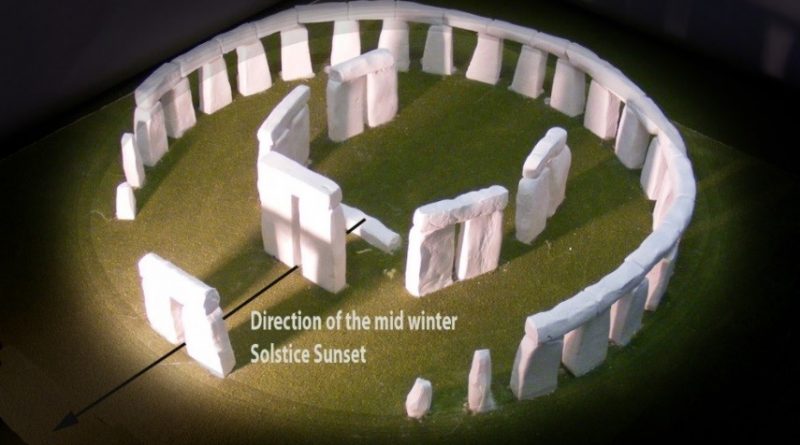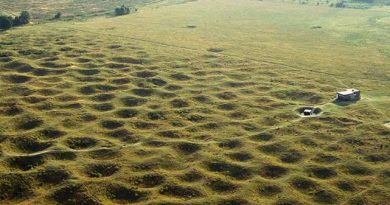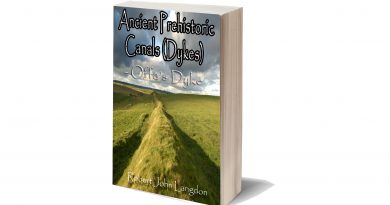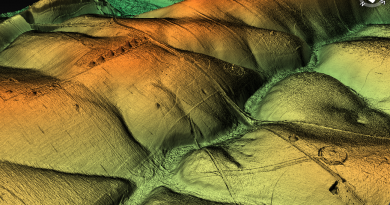Stonehenge Hoax – Round Monument?
Which could be called the Stonehenge ‘circular argument’? ………(Extract from the Book The Stonehenge Hoax)
The Problem
The traditional view of Stonehenge is of an entirely round monument with lintel stones completing the circle – but there is a massive problem with this theory (and it is ONLY a hypothesis – as nothing has ever been proven), for not all the expected stones holes are present, leading to some experts to suggest that the monument is, in fact, incomplete and was never finished.
The Solution
The original references to Stonehenge were made by William Stukeley FRS, FRCP, FSA (7 November 1687 – 3 March 1765), an Anglican Clergyman and English Antiquarian who pioneered the archaeological investigation of the prehistoric monuments of Stonehenge and Avebury. He was friends with Isaac Newton and was amongst Newton’s first biographers. Stukeley was also involved with Freemasonry and instrumental in British scholarship’s acceptance of Charles Bertram’s forged ‘Description of Britain’.
‘Description of Britain’, also known by its Latin name De Situ Britanniae (“On the Situation of Britain”), was a literary forgery perpetrated by Charles Bertram on the historians of England. It purported to be a 15th-century manuscript by the English monk Richard of Westminster, including information from a lost contemporary account of Britain by a Roman general (dux), new details of the Roman roads in Britain in the style of the Antonine Itinerary, and “an ancient map” as detailed as by Ptolemy.
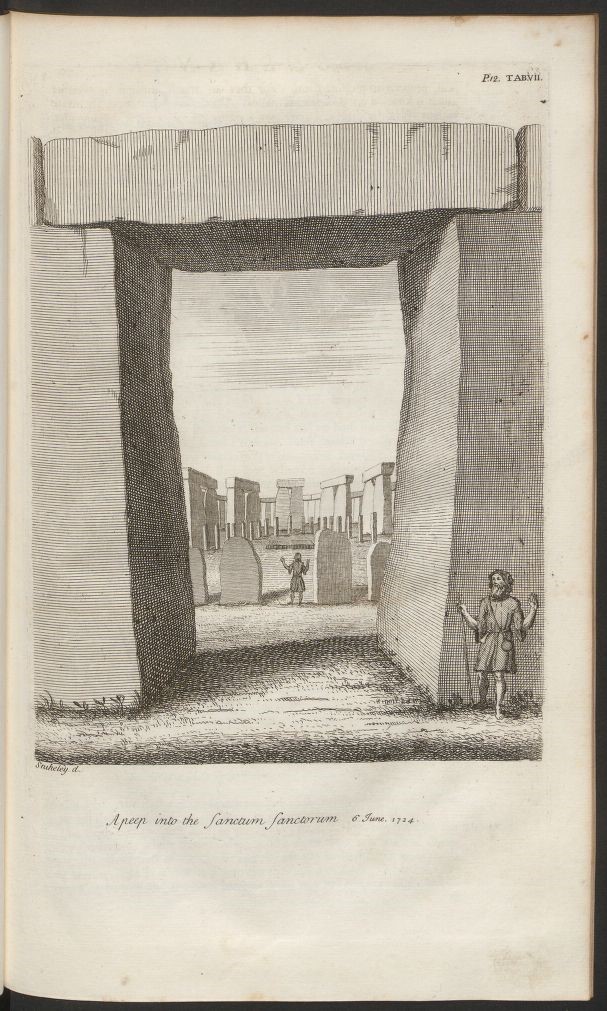
| Stukeley’s Vision of Stonehenge – Stonehenge Hoax |
Bertram disclosed the existence of the work through his correspondence with the antiquarian William Stukeley in 1748, provided him with a “copy”, which was made available, and published in Latin in 1757. By this point, his Richard had become conflated with the historical Richard of Cirencester. The text was treated as a legitimate and significant source of information on Roman Britain from the 1750s through the 19th century, when it was progressively debunked by John Hodgson, Karl Wex, B. B. Woodward, and J. E. B. Mayor. Some tales from the forgery can still be found in peer-reviewed works of British history.
Despite Stukeley’s Anglican faith and church offices, he was obsessed with the idea of Druidism, and he will be remembered as “the greatest of the early forerunners of the discipline of archaeology” – the ‘Father of Archaeology’ for his habit of going out personally with teams of ‘navvies’ to examine, explore (and sadly destroy) many ancient sites in search of lost treasures.
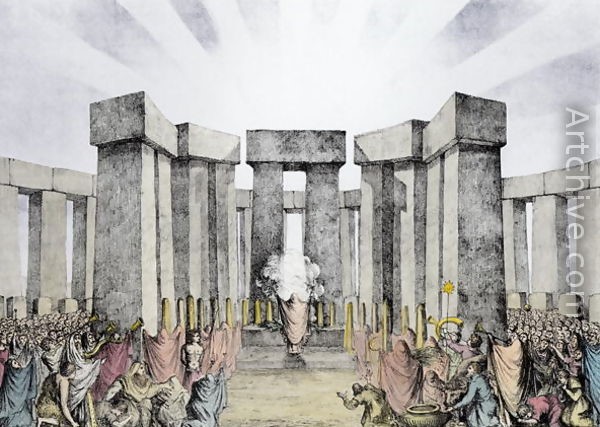
Druids were Sun worshippers, according to the limited accounts which have survived. Their name means ‘Knowing the Oak Tree’, and the oak was a Druidic symbol of the Sun. The ‘mighty oak’ claim to be the king of the forest, which is difficult to dismiss and its strength is legendary. Unfortunately, all their lore and history were committed to memory, never written down, but the symbolism and myths have survived to include reincarnation was at the centre of their ancient faith.
There has been much speculation on the Druidic religion, but in the main, we have only Roman accounts, particularly that of Julius Caesar, on which to rely. Every sign of this popular general’s attempt to translate Druidic gods and customs into his native Roman language would be surprising if a degree of adverse propaganda did not colour his account.
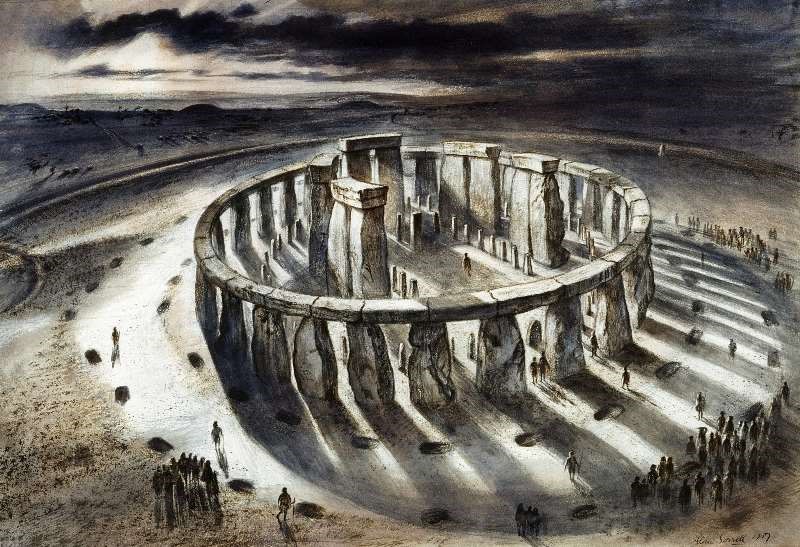
However, Caesar has no hesitation in equating the Druids’ Gods and Goddesses with the astrological gods of Rome. It’s hard to doubt these accomplished priests, with their international connections, recognised the solar majesty worshipped throughout the ancient world with his family of planetary divinities.
Stukeley was attracted to Stonehenge as a Druid, and his excavations in and around the site found Roman pottery and artefacts, which made him believe that the monument was first a Druid Temple that continued as a Roman Sun Temple. The classic shape of a Sun Temple was round (like the Sun), and as three-quarters of Stonehenge survived in a rounded form with the rest of the site ‘robbed out’, therefore there was no problem for Stukeley to imagine the entire site was round and commissioned artists to create drawings of the monument as it would have looked when it was first constructed.
This observation of the monument was complemented as ‘The Avenue’ (a roadway with ditches on either side), he found was aligned towards the Midsummer Solstice – the longest day of the calendar year and therefore a druid festival.
We can see why the ‘myth’ about Stonehenge being round started – but why does it continue today?
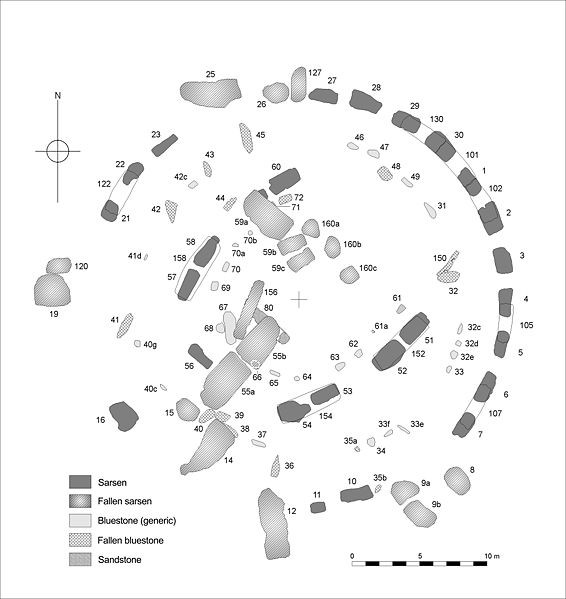
| Stonehenge remaining Stones – Stonehenge Hoax |
Some academics have commented upon the ‘incompleteness’ of the SW quadrant of the structure as it seems to lack the large uprights and lintels that other areas possess. This is compounded as there has been a lack of excavations in this area.
In dry summers, post hole ‘patches’ have been found on the unexcavated sections of Stonehenge that match the predicted missing stone holes, and as a consequence, most archaeologists have felt that to be was sufficient evidence to prove the monument was indeed complete and round as Stukeley first suggested – yet there is a standing stone which defies this belief.
Stone 11 is a strange standing stone that seems to have been in the position since the start of the monument – but is rarely spoken about by the archaeologists or the site experts. For example, in English Heritage’s (EH) book “Stonehenge in its landscape.” cleal et al. (1995) – the equivalent to the bible on Stonehenge by EH, all they say about this unique stone is: “Unexcavated – standing, but possibly broken in antiquity, as it is considerably shorter than the other stones of the circle.”
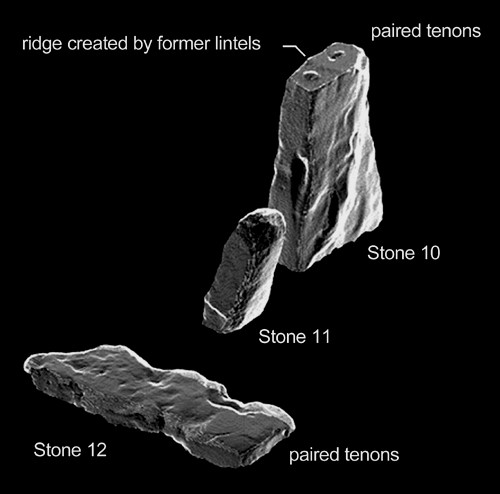
| Stone Hole 13 is the same size as Stone 11 – Stonehenge Hoax |
While it is indeed ‘shorter’ (it is half the size in height) – but moreover, less than 25- 30% the width of the other circle standing stones! Now, we could accept that the top of a stone could have been broken off (but there are no others like that at Stonehenge – so consequently, it’s unique). Moreover, how do you reduce the ‘width’ of a stone by 75% without leaving some signs of alteration like an enlarged base still in the ground?
Furthermore, stone hole 13 is again too small to take a full-sized Sarsen, but it may take a stone of Stone 11 proportions. All the major standing stones of Stonehenge have huge foundation holes because they contain ‘ramps’ next to the stone holes, which were used to lever the stone in place due to their colossal weight. Stone hole 13 showed that it did not have a ramp and was deeper than expected – either this was a ‘badly’ built stone hole, or it was never intended for a larger sarsen stone.
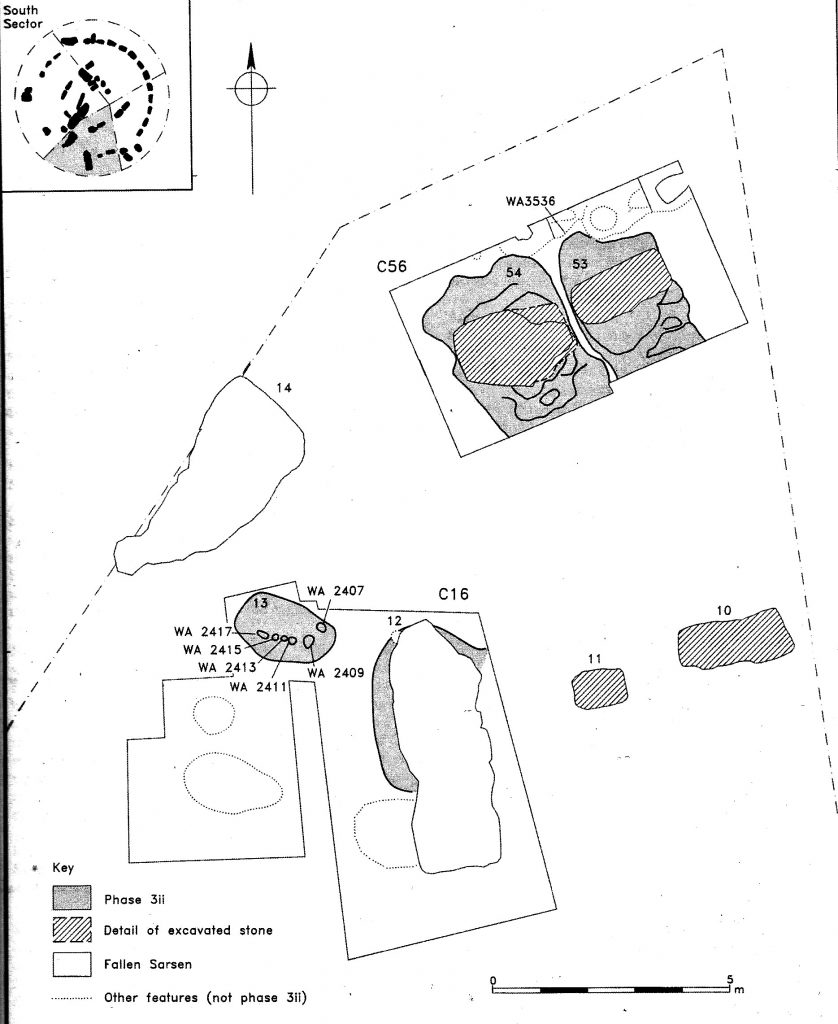
Consequently, the size of unaltered Stone 11 and the Stone hole 13 clearly proves beyond any reasonable doubt that the idea that Stonehenge was a circular monument ‘with lintels’ and standing stones of exact proportions are entirely fabricated and falsely reported by archaeologists.
The truth, the whole truth and nothing but the` truth!
Looking at the existing standing stones in detail, including the excavation reports (remembering only about half of the site has ever been fully excavated), we realise that we have a circular type of stone circle – the SW quadrant stones are missing in some respects. So how does this help us to understand the site and construction?
Another aspect of Stonehenge not discussed in detail is the early (Phase I – you see Phase III currently) monument’s design. Excavations have found a horseshoe arrangement of stone holes that are separated by a constant 2m facing the NW. We are all aware of the NE Solstice sunrise, but few understand that the moon sets in the NW at its northerly position on the horizon.
Stonehenge is also surrounded by other mysterious constructions called ‘Long Barrows’ – in fact, there are as many as eight long barrows within two miles of the Stonehenge site – more Long Barrows in any single location in Britain (or even the world!). Long Barrows are sites our ancestors placed the bones of their dead after they have been ‘defleshed’ by the process known as ‘excarnation’ – this is achieved by leaving the body out in the open. Thus, birds eat the corpse’s flesh (as they were seen as sacred animals as they could fly from the heavens – as seen in Egyptian Archaeology and Mythology).
We traditionally represent (even today) death with the night and the moon, so we can conclude that if this were a site for the dead and excarnation – if a temple were to be constructed, it would naturally reflect an affiliation to the moon. Symbolically, we would historically represent the moon as a ‘crescent shape’ (as we see from flags of the world), which we see on this site from the existing standing stones combined with the smaller stone hole foundations (Stone 11 & 13). Consequently, Stonehenge was never constructed initially as a round stone circle but as a crescent circle to represent death and the journey to the afterlife.
Why is a horseshoe crescent facing the Sun in the monument’s centre?
The giant stone trilithon crescent within the crescent (that faces the Summer Solstice sunrise) is very symbolic – as we have seen in other cultures and belief systems of the ancient world, which frequently represents rebirth or reincarnation.
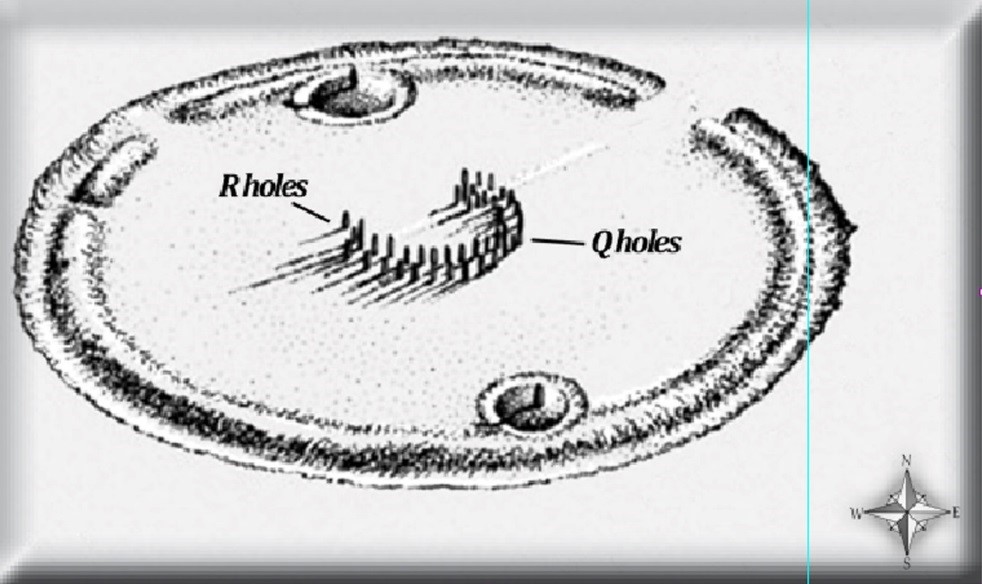
| Phase I of Stonehenge, with Mortuary Stone holes – Stonehenge Hoax |
The same structure can also be used to point to the Midwinter Solstice sunset (which is precisely 180 o in the opposite direction), So the ‘open’ (direction) of the horseshoe points to the Solstice Sunrise, but the ‘main’ and more important direction of the symbol points in the opposite direction, out of the back of the inner horseshoe to the Winter Solstice sunset.
Is this the first indication of how the builders of Stonehenge viewed their world of life and death? The symbolism indicates that the temple is telling us that Stonehenge represents the reincarnation of the soul and the belief in the afterlife.
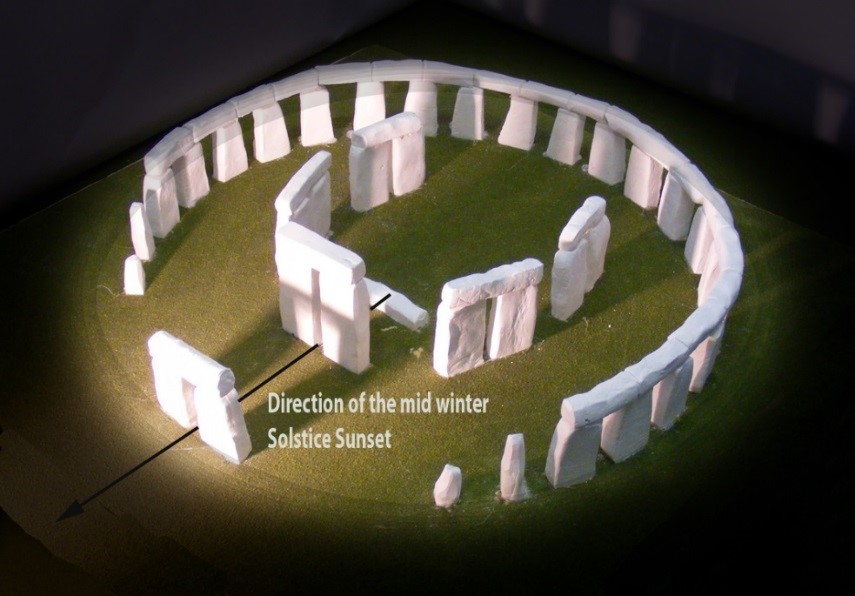
| Stonehenge is a monument to the DEAD and so Crescent Moon shaped – Stonehenge Hoax |
Further Reading
For information about British Prehistory, visit www.prehistoric-britain.co.uk for the most extensive archaeology blogs and investigations collection, including modern LiDAR reports. This site also includes extracts and articles from the Robert John Langdon Trilogy about Britain in the Prehistoric period, including titles such as The Stonehenge Enigma, Dawn of the Lost Civilisation and the ultimate proof of Post Glacial Flooding and the landscape we see today.
Robert John Langdon has also created a YouTube web channel with over 100 investigations and video documentaries to support his classic trilogy (Prehistoric Britain). He has also released a collection of strange coincidences that he calls ‘13 Things that Don’t Make Sense in History’ and his recent discovery of a lost Stone Avenue at Avebury in Wiltshire called ‘Silbury Avenue – the Lost Stone Avenue’.
Langdon has also produced a series of ‘shorts’, which are extracts from his main body of books:
For active discussions on the findings of the TRILOGY and recent LiDAR investigations that are published on our WEBSITE, you can join our and leave a message or join the debate on our Facebook Group.

